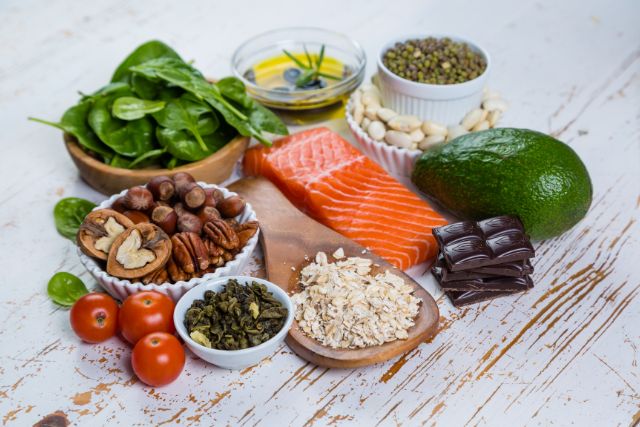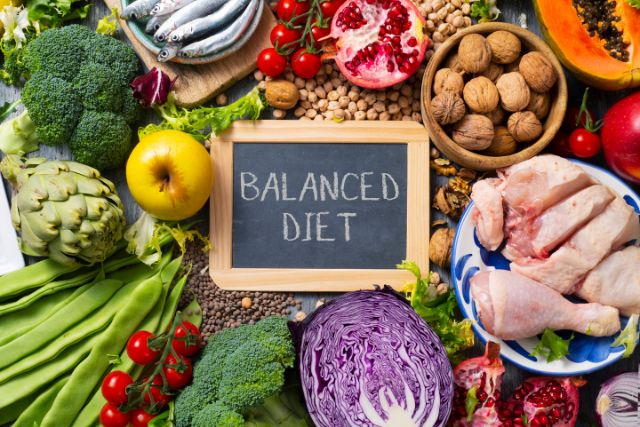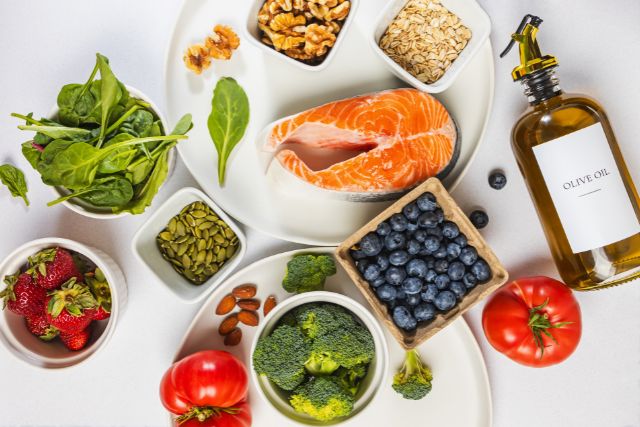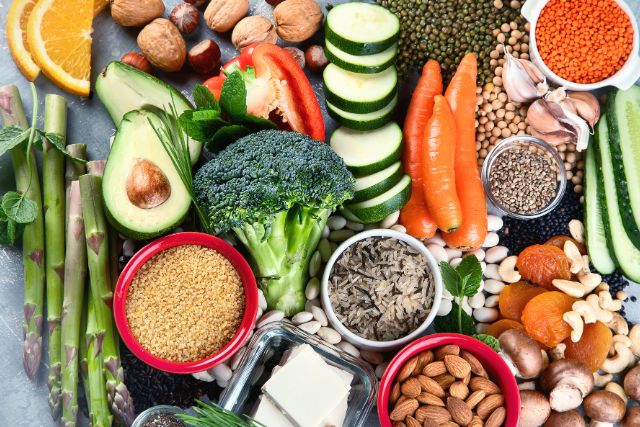Recent Posts
-

- Diabetes-Friendly Nutrition: Smart... 08.12.2024
-

- Nutrition for Chronic... 08.12.2024
-

- Anti-Inflammatory Diet: Food... 08.12.2024
-

- Low-Sodium and Heart-Healthy:... 08.12.2024
-

- Plant-Based Diets for... 08.12.2024
Low-FODMAP Cooking for Irritable Bowel Syndrome (IBS): Easing Digestive Discomfort

The gastrointestinal condition known as irritable bowel syndrome (IBS) is a widespread condition that affects millions of individuals all over the globe. Irritable bowel syndrome (IBS) is a condition that may have a substantial influence on one's quality of life. It is characterised by symptoms such as bloating, stomach discomfort, gas, diarrhoea, and constipation. Diet is recognised to have a significant influence in the management of symptoms while the actual origin of irritable bowel syndrome (IBS) is still unknown. The Low-FODMAP diet is one specific dietary strategy that has garnered a lot of interest due to the fact that it is beneficial in reducing the symptoms of irritable bowel syndrome (IBS).
What Are FODMAPs?
Short-chain carbohydrates and sugar alcohols are referred to as FODMAPs, which stands for fermentable oligosaccharides, disaccharides, monosaccharides, and polyols. These substances may be found in a wide variety of meals. They are fermented by bacteria in the gut, which results in the generation of gas and the retention of water in the bowel. These chemicals are poorly absorbed in the small intestine, which is followed by fermentation. This has the potential to bring on or exacerbate symptoms of irritable bowel syndrome in persons who are sensitive.
Common high-FODMAP foods include:
- Oligosaccharides: Found in wheat, rye, onions, and garlic.
- Disaccharides: Found in milk, yogurt, and soft cheese (due to lactose).
- Monosaccharides: Found in certain fruits like apples, pears, and honey (due to fructose).
- Polyols: Found in artificial sweeteners and some fruits like cherries and stone fruits.
The Low-FODMAP Diet: A Three-Phase Approach
The Low-FODMAP diet is typically broken down into three phases: elimination, reintroduction, and personalization.
Elimination Phase
At this stage, the diet is cleansed of all items that are rich in FODMAPs for a period of four to six weeks. As the digestive tract is allowed to settle, this helps to greatly lessen the symptoms of irritable bowel syndrome (IBS).
Reintroduction Phase
Following an improvement in symptoms, the individual FODMAP groups are progressively reintroduced one at a time. Through this, it is possible to determine which FODMAPs cause symptoms and in what quantities they do so.
Personalization Phase
The findings of the reintroduction phase are used to produce a personalised diet plan that is intended to be followed for multiple years. During this phase, the goal is to find a middle ground between the management of symptoms and the maintenance of a diet that is both varied and pleasurable.
Tips for Low-FODMAP Cooking
Cooking low-FODMAP meals doesn't mean sacrificing flavor or variety. Here are some tips to help you prepare delicious and gut-friendly meals:
Plan Your Meals
First, arrange your meals such that they are centred on low-FODMAP items. Emphasis should be placed on fresh, healthy foods such as lean meats, vegetables that are low in FODMAPs (such as carrots, zucchini, and spinach), and grains that are gluten-free (such as quinoa and rice).
Use Low-FODMAP Alternatives
Replace ingredients that are high in FODMAP with alternatives that are low in FODMAP. For instance, use oil that has been infused with garlic rather than raw garlic, and use lactose-free dairy products rather than those that include ordinary dairy.
Spice It Up
You may impart a great deal of flavour to your foods by utilising herbs and spices, and they won't upset your digestive system. Herbs that are fresh, such as basil, thyme, and parsley, as well as spices, such as ginger and turmeric, are low in FODMAPs and are excellent for increasing flavour.
Mind Your Portions
Even foods that are low in FODMAPs might induce symptoms if they are consumed in extreme doses. By adhering to the appropriate serving quantities, you may prevent your digestive system from being overloaded.
Batch Cook
The act of preparing meals in advance may help save time and lessen the temptation to consume convenience foods that are high in FODMAP foods. In order to prepare low-FODMAP meals in bulk and store them in the freezer for those days when you are too busy to cook.
Stay Hydrated
Consuming a large amount of water throughout the day is beneficial to the maintenance of good digestion. Drinks that are rich in FODMAPs, such as apple juice, should be avoided in favour of beverages such as water, herbal teas, or modest doses of low-FODMAP juices.
Sample Low-FODMAP Recipes
Here are a couple of simple and delicious low-FODMAP recipes to get you started:
Lemon Herb Grilled Chicken
Ingredients:
- 4 boneless, skinless chicken breasts
- 2 tablespoons garlic-infused olive oil
- Juice of 1 lemon
- 1 tablespoon fresh thyme, chopped
- 1 tablespoon fresh rosemary, chopped
- Salt and pepper to taste
Instructions:
- In a bowl, mix the garlic-infused olive oil, lemon juice, thyme, rosemary, salt, and pepper.
- Add the chicken breasts to the marinade, ensuring they are well-coated. Let it marinate for at least 30 minutes.
- Preheat the grill to medium-high heat.
- Grill the chicken for 6-7 minutes on each side or until fully cooked.
- Serve with a side of steamed green beans and quinoa for a complete low-FODMAP meal.
Zucchini and Carrot Fritters
Ingredients:
- 2 medium zucchinis, grated
- 2 medium carrots, grated
- 2 large eggs
- ¼ cup gluten-free flour
- 1 tablespoon fresh parsley, chopped
- Salt and pepper to taste
- 2 tablespoons garlic-infused olive oil
Instructions:
- Place the grated zucchini in a clean kitchen towel and squeeze out excess moisture.
- In a bowl, combine the grated zucchini, grated carrots, eggs, gluten-free flour, parsley, salt, and pepper. Mix until well combined.
- Heat garlic-infused olive oil in a large skillet over medium heat.
- Spoon the batter into the skillet, flattening each fritter with the back of a spoon.
- Cook for 3-4 minutes on each side or until golden brown.
- Serve with a dollop of lactose-free yogurt.
Even if you have irritable bowel syndrome (IBS), you do not have to give up tasty meals. By following a diet that is low in FODMAPs and making conscious decisions in the kitchen, you will be able to enjoy a broad range of meals that are pleasant while preventing symptoms of irritable bowel syndrome (IBS). It is important to keep in mind that the Low-FODMAP diet is a tool that may assist you in managing your symptoms; the key to long-term success is personalisation and flexibility. Before beginning any new diet plan, it is important to always talk with a healthcare physician or a trained dietitian, particularly if you have other health concerns that need to be addressed.
Disclaimer: The information provided in this article is for general information purposes only. All information in this article is sourced from other websites, and we do not represent any rights regarding the contents and information on the site. All rights belong to their original owner.





